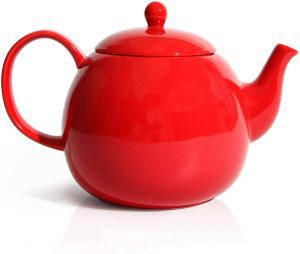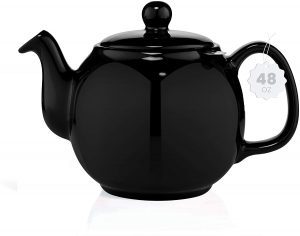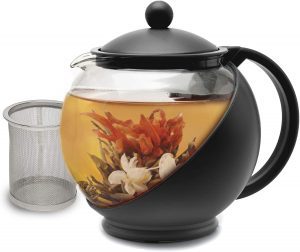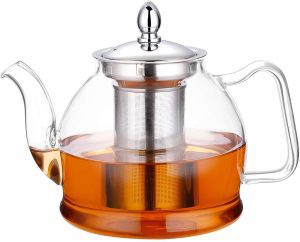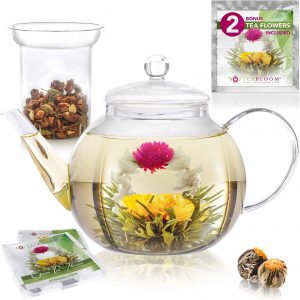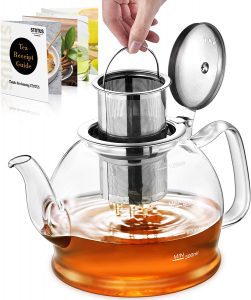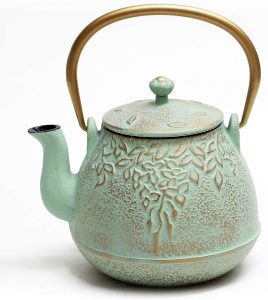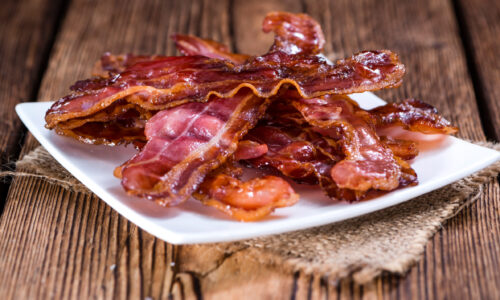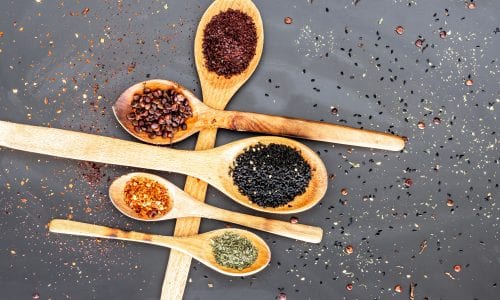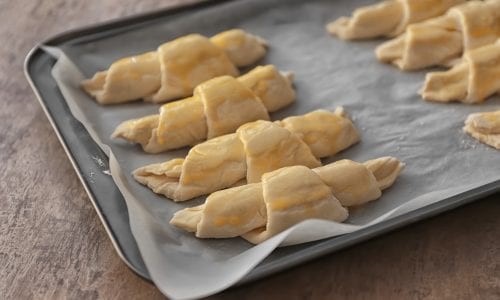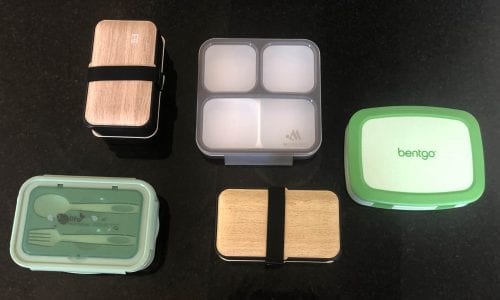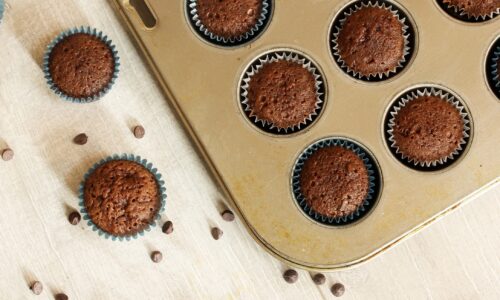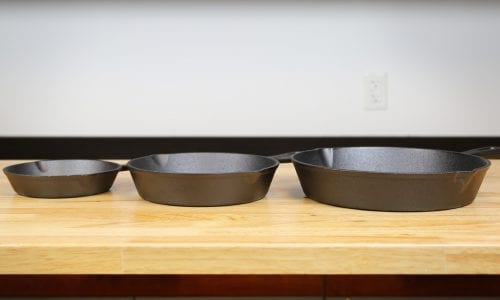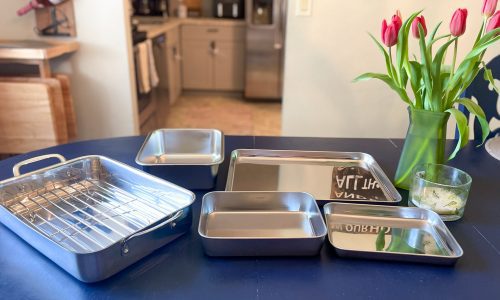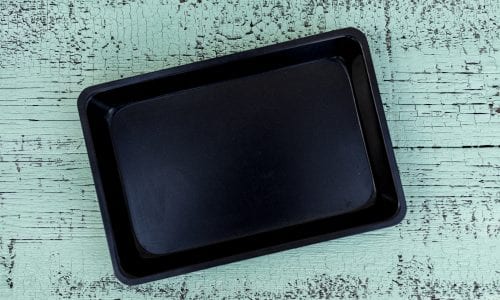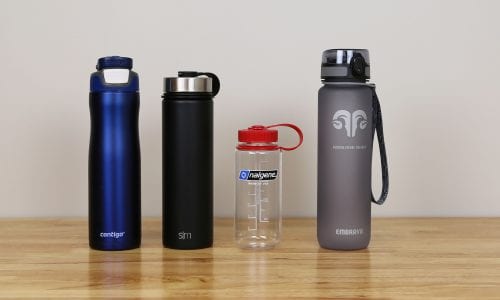The Best Teapots
We looked at the top 7 Teapots and dug through the reviews from 19 of the most popular review sites including and more. The result is a ranking of the best Teapots.
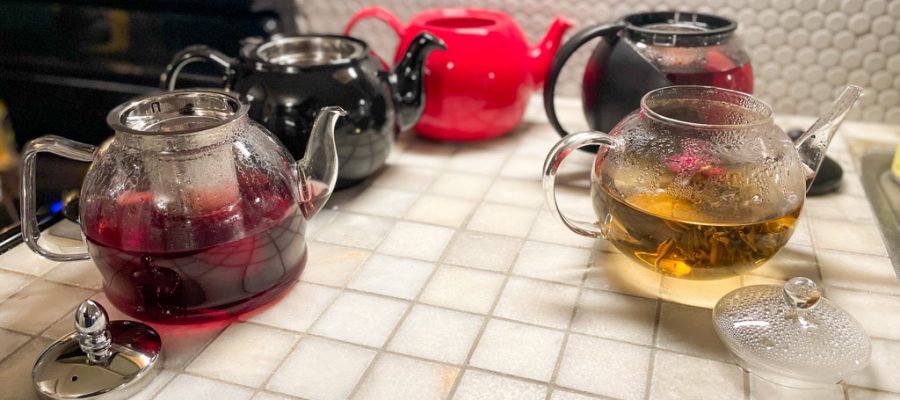
Our Review Process
Don't Waste Your Money is focused on helping you make the best purchasing decision. Our team of experts spends hundreds of hours analyzing, testing, and researching products so you don't have to. Learn more.
Our Picks For The Top Teapots
- 1. Sweese Lip-Catch Lid Porcelain Teapot
- 2. SAKI Extra-Fine Stainless Steel Infuser Dishwasher Safe Teapot
- 3. Primula Temperature Safe Glass & Removable Infuser Teapot
- 4. HIWARE Stovetop Safe Borosilicate Glass Teapot
- 5. Teabloom Dishwasher Microwave & Stovetop Safe Clear Glass Teapot
- 6. STNTUS Water Amount Scale Lines Clear Glass Teapot
- 7. Toptier Stovetop Safe Cast Iron Non-Drip Spout Teapot
This sturdy porcelain teapot is ideal for everyday use. Its 40-ounce size holds around five regular-sized mugs of tea. The teapot is dishwasher- and microwave-safe and has a drip-preventing lip.
For Everyday UseThis teapot is sturdy and made from professional-grade porcelain.
This porcelain teapot has an extra-fine stainless steel strainer to infuse flavor while catching tea leaves. The dishwasher-safe teapot can withstand high temperatures and has a capacity of 48 ounces.
Extra-Fine StrainerYou won’t get any small particles floating in your teacup with this teapot.
This glass and plastic teapot can be used for loose-leaf tea, tea bags, blooming tea and more. It can also be used to infuse water with fresh fruit or herbs. It is dishwasher-safe and easy to clean.
Multi-PurposeThis teapot can be used for all teas and infuses water with fruit and herbs.
This stunning glass teapot is hand-crafted and made from borosilicate glass. It can be used in the microwave or on the stove on medium heat. The teapot is sturdy and works for everyday use.
Hand-CraftedThis beautiful, stove-safe teapot is made from borosilicate glass.
Buying Guide
Is there anything more comforting than a steaming hot cup of tea? Whether you like a cuppa in the morning before you head out for the day or after coming home from work to put your feet up, tea is more than just a beverage. It’s a cup of soothing relaxation, steeped with ritual, that makes many people feel calm and collected. The best way to enjoy a cup of tea is with a teapot.
While many people confuse a teapot with a kettle, they are not the same. A kettle is used for boiling water — which can be for tea or other beverages and food. A teapot, which isn’t meant for use with an internal or external heat source, is specifically for brewing tea and infusing flavor into boiled water. You can brew tea in individual cups or mugs, but it doesn’t quite have the same effect as using a teapot.
One advantage of using a teapot is that you can avoid over-brewing. Different types of teas have varying brewing times and temperatures. If you place tea leaves into a cup, the tea continues to brew as you drink it. However, with a teapot, you pour the tea out while the leaves remain in the pot.
Teapots come in many materials, shapes and sizes today, from glass and clay to porcelain and iron. These differences are often informed by cultural traditions, country of origin and era of make, but some do have different uses. For example, stainless steel versions retain heat well, while glass and ceramic versions are the least likely to influence the flavor of tea. Some ceramic teapots may be best used for just one type of tea, since the residue from a stronger tea might affect the flavors of other teas inside these more porous vessels.
Some teapots are simple and others have more sophisticated features. At a basic level, though, most have some kind of handle, so you can pick it up without burning your hand, and a spout to pour from. Many offer filtration of tea leaves through stainless steel mesh strainers, tiny holes or long, thin spouts.
In general, the right teapot is the one most suited to your use, whether you are drawn more by its easy-care qualities, beauty, cultural origins or more modern complexity.
Why we recommend these teapots?
Products Considered
Products Analyzed
Expert Reviews Included
User Opinions Analyzed
Our experts reviewed the top 7 Teapots and also dug through the reviews from 19 of the most popular review sites including and more. The result is a ranking of the best of the best Teapots.
DWYM is your trusted roduct review source. Our team reviews thousands of product reviews from the trusted top experts and combines them into one easy-to-understand score. Learn more.
The Best Bang For Your Buck
Primula Temperature Safe Glass & Removable Infuser Teapot
Key Takeawy
This glass and plastic teapot can be used for loose-leaf tea, tea bags, blooming tea and more. It can also be used to infuse water with fresh fruit or herbs. It is dishwasher-safe and easy to clean.
What other experts liked
What other experts didn't like
What to Look For
- Depending on what kinds of teas you like to drink, getting a teapot with a built-in infuser might be a good idea. These are particularly good for splintery tea leaves or if you like to also add herbs to your tea leaf mixture.
- One of the first things to consider when getting a teapot is the capacity: how many cups of tea it can hold. For example, if you typically drink tea alone, then a teapot with a small capacity of 8-16 ounces is best. If you enjoy a cup with friends and family, you may want a large teapot with a capacity of 40 ounces or more.
- Did you know that some types of teas are better for certain teapot materials? For example, if you like herbal teas, they will taste best when brewed in a glass teapot. If you are a fan of green tea or black tea, then a porcelain teapot is the winning choice. Dark teas work best in a clay teapot.
- Carefully examine the design of the teapot’s spout, as it has an important functional purpose. If the spout is short, the stream of tea will be harder to control, splashing or spilling out of the cup — but the spout will be less breakable and more convenient. A long spout tends to result in a smooth flow, and also cools the tea down to a drinkable temperature. It may also draw tea from the bottom of the pot, where it’s warmer and has more flavor. Also, some spouts dribble as a result of air pressure, so you may want to consider no-drip teapot.
- Consider how your teapot will look with your existing teaware. Does it match with your cups or mugs? While they don’t need to be an exact match, you may want some aesthetic coordination — so choose similar colors, designs or patterns.
More to Explore
The first teapots were invented in China thousands of years ago. Starting in the Tang dynasty (618-906), tea was sold in bricks, and people would break off chunks and boil them in water in a cauldron, drinking the tea out of wide bowls. The process was later refined, and the bricks would get pounded into a powder form — but the tea was still served in bowls.
China had used vessels similar to teapots for thousands of years, but these were first used for serving wine and water. In the late Yuan dynasty period (1279-1368), tea preparation underwent a major change and came in rolled leaves instead of slabs, which changed how tea was consumed. By the early Ming period (1368-1644), teapots were in use.

